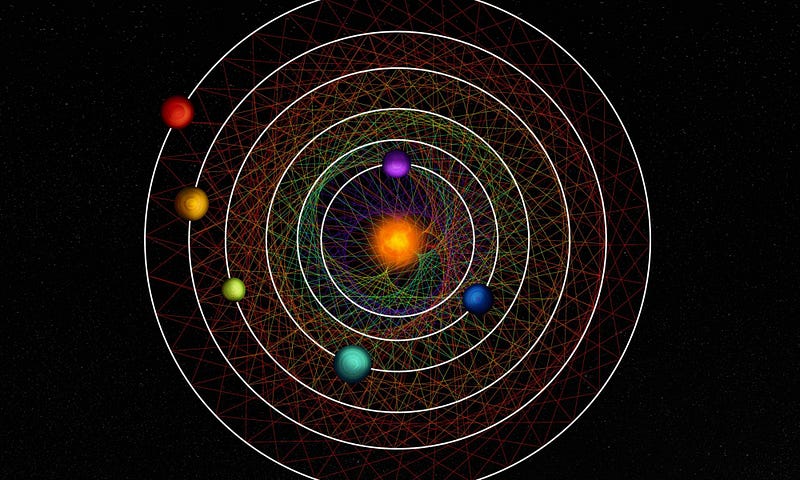A Unique Planetary System: Six Sub-Neptunes in Perfect Harmony
Written on
Chapter 1: Discovery of the Resonant System
A research team led by astronomer Rafael Luque from the University of Chicago has confirmed the existence of a remarkable planetary system orbiting the K0-type star HD110067. Utilizing data from NASA’s Transiting Exoplanet Survey Satellite (TESS) and ESA’s CHaracterising ExOPlanet Satellite (Cheops), they identified a total of six sub-Neptune planets, all of which are in perfect resonance with one another. This groundbreaking research was published on November 29 in the journal Nature.
In 2020, TESS collected transit data that indicated at least two planets, revealing their orbital periods of approximately nine days for the closer planet and fourteen days for the more distant one. Furthermore, the analysis hinted at additional planets, which Cheops later confirmed by identifying a third planet with a twenty-day orbit.
Section 1.1: Understanding Orbital Resonance
From the observed orbital periods, Luque discovered that the first three planets exhibit a 3/2 resonance with each other. Specifically, the innermost planet (Planet b) completes three orbits in the same time frame that Planet c completes two. Similarly, Planet c orbits three times while Planet d orbits twice. The next step involved intricate mathematical calculations.

The team proceeded to explore potential resonance patterns, correlating another set of transits to a planet with a 31-day orbit. This planet also adhered to a 3/2 resonance, where Planet d orbits three times for every two orbits of Planet e. However, two additional planets remained elusive, as TESS had only captured their transits once, complicating confirmation. One of these orbits in 41 days, while the other does so in 55 days.
Subsection 1.1.1: Overcoming Challenges in Data Recovery
The challenge was further amplified by excess light interference from Earth and the Moon in the TESS data. Scientists Joseph Twicken and David Rapetti were working on algorithms to recover lost data, and Rapetti successfully applied this code to the TESS data, uncovering the predicted transits for the outer two planets.
Section 1.2: Significance of the Findings
While multi-planet systems are common, the resonant nature of this specific configuration is extraordinary. Luque notes, “We estimate that only about one percent of all systems maintain resonance, and even fewer exhibit a chain of planets in such arrangements.” The presence of six planets in resonance could offer insights into planetary formation, as Luque explains, “It reflects a pristine configuration of a planetary system that has remained largely untouched.”
Chapter 2: Observational Opportunities
Exciting Star System With 6 Planets Orbiting With Perfect Rhythm
This video explores the dynamics of the newly discovered star system and its planets, emphasizing their unique orbital relationships.
In addition to its remarkable planetary configuration, HD110067 is the brightest star known to host at least four planets. The close-in orbits of these sub-Neptunes suggest that their atmospheres are likely inflated, making them prime candidates for future studies with the James Webb Space Telescope. These planets are anticipated to possess hydrogen-rich atmospheres, with few examples confirmed to date.
The Planets Are Weirdly In Sync
This video delves into the synchronized orbits of the planets in the HD110067 system, examining the implications for our understanding of planetary systems.
Luque concludes, “This discovery will serve as a benchmark for studying how sub-Neptunes—the most common type of planets beyond our solar system—form, evolve, and what conditions they might have to support liquid water on their surfaces.” The insights gained from this system could significantly enhance our understanding of planetary formation, system evolution, and the atmospheric characteristics of sub-Neptunes, potentially revealing new locations in the search for extraterrestrial life.
Sources: ESA press release, University of Chicago press release, NASA Exoplanets blog
Originally published on Universe Today under a Creative Commons license.